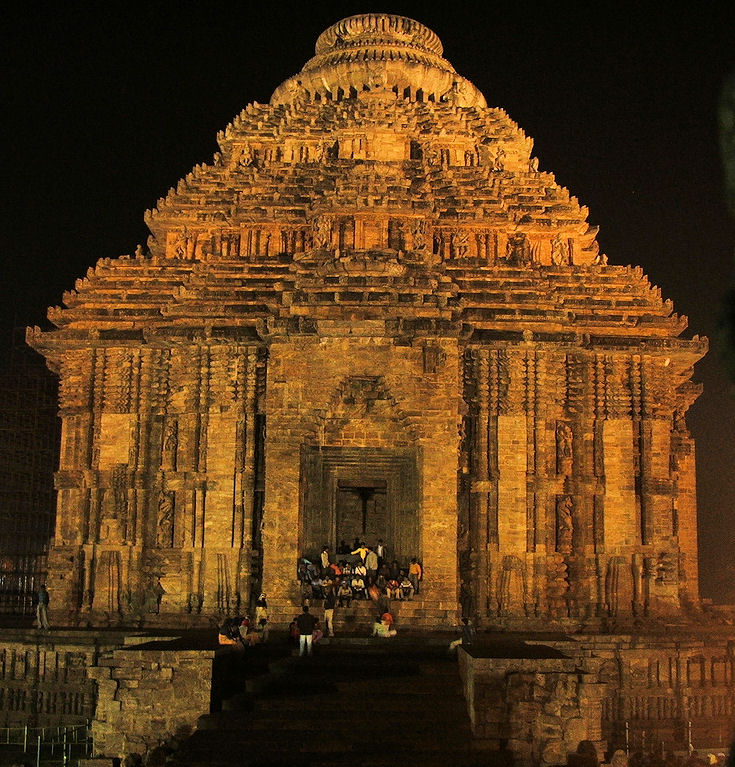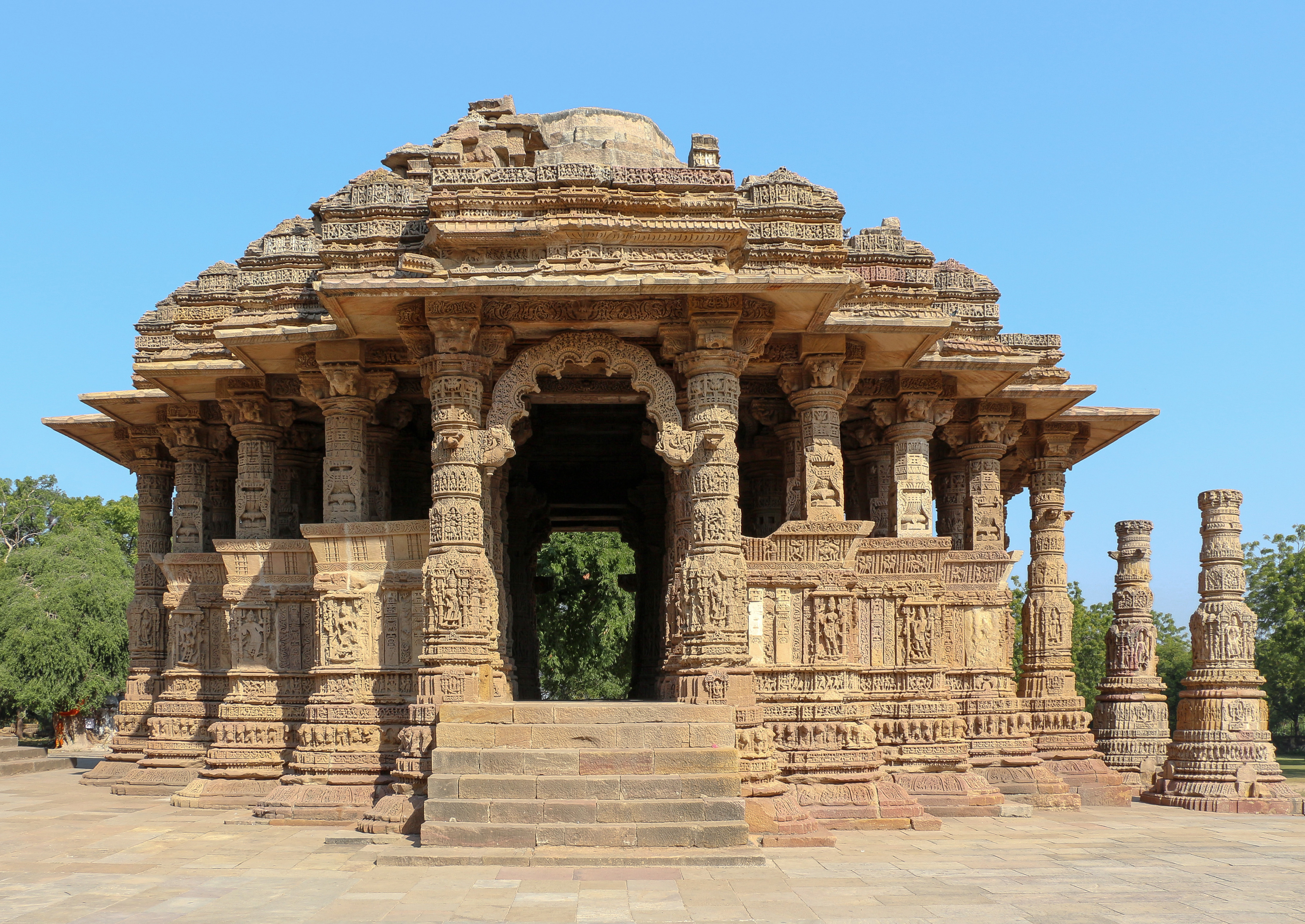|
Ratha Saptami
Ratha Saptami or Rathasapthami ( sa, रथसप्तमी or Magha Saptami) is a Hindu festival that falls on the seventh day (Saptami) in the bright half (''Shukla Paksha'') of the Hindu month Maagha. It is symbolically represented in the form of the Sun God Surya turning his Ratha (Chariot) drawn by seven horses (representing seven colours) towards the northern hemisphere, in a north-easternly direction. It also marks the birth of Surya and hence celebrated as Surya Jayanti (the Sun-god’s birthday). Ratha Saptami is symbolic of the change of season to spring and the start of the harvesting season. For most Indian farmers, it is an auspicious beginning of the New Year. The festival is observed by all Hindus in their houses and in innumerable temples dedicated to Surya, across India. Background Sun worship is deep rooted in the Vedas of the Hindu religion and its antiquity also relates to several mythologies of the world such as that of China, Egypt and Mesopotamia ... [...More Info...] [...Related Items...] OR: [Wikipedia] [Google] [Baidu] |
Hindu
Hindus (; ) are people who religiously adhere to Hinduism. Jeffery D. Long (2007), A Vision for Hinduism, IB Tauris, , pages 35–37 Historically, the term has also been used as a geographical, cultural, and later religious identifier for people living in the Indian subcontinent. The term ''"Hindu"'' traces back to Old Persian which derived these names from the Sanskrit name ''Sindhu'' (सिन्धु ), referring to the river Indus. The Greek cognates of the same terms are "''Indus''" (for the river) and "''India''" (for the land of the river). The term "''Hindu''" also implied a geographic, ethnic or cultural identifier for people living in the Indian subcontinent around or beyond the Sindhu (Indus) River. By the 16th century CE, the term began to refer to residents of the subcontinent who were not Turkic or Muslims. Hindoo is an archaic spelling variant, whose use today is considered derogatory. The historical development of Hindu self-identity within the local ... [...More Info...] [...Related Items...] OR: [Wikipedia] [Google] [Baidu] |
Ugadi
Ugadi or Yugadi, also known as Samvatsarādi (), is New Year's Day according to the Hindu calendar and is celebrated in the states of Andhra Pradesh, Telangana, and Karnataka in India. It is festively observed in these regions on the first day of the Hindu lunisolar calendar month of Chaitra. This typically falls in April month of the Gregorian calendar. It also falls during the Tamil month of either Panguni or Chithrai, sometimes on the day after Amavasya with 27th Nakshatra Revati. Ugadi day is pivoted on the first New Moon after March Equinox. The day is observed by drawing colourful patterns on the floor called '' Muggulu'', mango leaf decorations on doors called ''torana'', buying and giving gifts such as new clothes, giving charity to the poor, oil massages followed by special baths, preparing and sharing a special food called ''pachadi'', and visiting Hindu temples. The ''pachadi'' is a notable festive food that combines all flavors – sweet, sour, salty, bitter, as ... [...More Info...] [...Related Items...] OR: [Wikipedia] [Google] [Baidu] |
Konark
Konark is a medium town in the Puri district in the state of Odisha, India. It lies on the coast by the Bay of Bengal, 65 kilometres from the capital of the state, Bhubaneswar. It is the site of the 13th-century Sun Temple, also known as the ''Black Pagoda'', built in black granite during the reign of Narasinghadeva-I. The temple is a World Heritage Site. The temple is now mostly in ruins, and a collection of its sculptures is housed in the Sun Temple Museum, which is run by the Archaeological Survey of India. Konark is also home to an annual dance festival called Konark Dance Festival, devoted to classical Indian dance forms, including the traditional classical dance of Odisha, Odissi. In February 2019, the Konark Dance Festival (now called Konark Music and Dance Festival) will be hosting its 33rd edition. The state government is also organising annual Konark Festival and International Sand Art Festival at Chandrabhaga Beach of Konark. On 16 February 1980, Konark lay ... [...More Info...] [...Related Items...] OR: [Wikipedia] [Google] [Baidu] |
Konarak Sun Temple
Konark Sun Temple is a (year 1250) Sun temple at Konark about northeast from Puri city on the coastline in Puri district, Odisha, India.Konark: India , Encyclopædia Britannica The temple is attributed to king of the about . Dedicated to the Hindu Sun God Surya, what remains of the temple complex has the appearance of a high chariot with immense wheels and horses, all carved from stone. On ... [...More Info...] [...Related Items...] OR: [Wikipedia] [Google] [Baidu] |
World Heritage Site
A World Heritage Site is a landmark or area with legal protection by an international convention administered by the United Nations Educational, Scientific and Cultural Organization (UNESCO). World Heritage Sites are designated by UNESCO for having cultural, historical, scientific or other form of significance. The sites are judged to contain " cultural and natural heritage around the world considered to be of outstanding value to humanity". To be selected, a World Heritage Site must be a somehow unique landmark which is geographically and historically identifiable and has special cultural or physical significance. For example, World Heritage Sites might be ancient ruins or historical structures, buildings, cities, deserts, forests, islands, lakes, monuments, mountains, or wilderness areas. A World Heritage Site may signify a remarkable accomplishment of humanity, and serve as evidence of our intellectual history on the planet, or it might be a place of great natural beauty. ... [...More Info...] [...Related Items...] OR: [Wikipedia] [Google] [Baidu] |
Sun Temple, Modhera
The Sun Temple of Modhera is a Hindu temple dedicated to the solar deity Surya located at Modhera village of Mehsana district, Gujarat, India. It is situated on the bank of the river Pushpavati. It was built after 1026-27 CE during the reign of Bhima I of the Chaulukya dynasty. No worship is offered now and is protected monument maintained by Archaeological Survey of India. The temple complex has three components: ''Gūḍhamanḍapa'', the shrine hall; ''Sabhamanḍapa'', the assembly hall and ''Kunḍa'', the reservoir. The halls have intricately carved exterior and pillars. The reservoir has steps to reach the bottom and numerous small shrines. History The shrine proper of the Sun Temple was built during the reign of Bhima I of Chaulukya dynasty. Earlier, during 1024–1025, Mahmud of Ghazni had invaded Bhima's kingdom, and a force of around 20,000 soldiers had unsuccessfully tried to check his advance at Modhera. Historian A. K. Majumdar theorizes that the Sun Temple migh ... [...More Info...] [...Related Items...] OR: [Wikipedia] [Google] [Baidu] |
Konark Sun Temple
Konark Sun Temple is a (year 1250) Sun temple at Konark about northeast from Puri city on the coastline in Puri district, Odisha, India.Konark: India , Encyclopædia Britannica The temple is attributed to king Narasimhadeva I of the Eastern Ganga dynasty about . Dedicated to the Hindu Sun God Surya, what remains of the temple complex has the appearance of a high chariot with immense wheels and horses, all carved from stone. Once over high, ... [...More Info...] [...Related Items...] OR: [Wikipedia] [Google] [Baidu] |
Modhera SunTemple
Modhera is a village in Mehsana district of Gujarat, India. The town is well known for the Sun Temple of Chaulukya era. The town is located on the bank of Pushpavati river. History The town was known as Dharmaranya during Puranic age. It is believed that Rama had performed yagna here to cleanse the sin of killing Brahmin Ravana. He had built ''Modherak'' which was later known as Modhera. The Sun Temple was built during the reign of Bhima I of Chaulukya dynasty in 1026-1027 (Vikram Samvat 1083). Gyaneshwari stepwell located in village belongs to 16-17th century. It has a shrine at the first pavilion of the stepwell instead of usual at the end. Modheshwari Mata Temple is located in the village. Economy Electricity Modhera became the first "solar village" of India. The village meets its complete electricity requirements by a 6 MW solar plant with a 15 MWh battery energy storage system on land located from the village. A total of 1300 out of the 1600 houses in the villag ... [...More Info...] [...Related Items...] OR: [Wikipedia] [Google] [Baidu] |
Puja (Hinduism)
''Puja'' ( sa, पूजा, pūjā, translit-std=IAST) is a worship ritual performed by Hindus, Buddhists and Jains to offer devotional homage and prayer to one or more deities, to host and honor a guest, or to spiritually celebrate an event. It may honor or celebrate the presence of special guests, or their memories after they die. The word ''pūjā'' is Sanskrit, and means reverence, honor, homage, adoration, and worship.पूजा ''Sanskrit Dictionary'', Germany (2009) Puja, the loving offering of light, flowers, and water or food to the divine, is the essential ritual of Hinduism. For the worshipper, the divine is visible in the image, and the divinity sees the worshipper. The interaction between human and deity, between |

.jpg)






